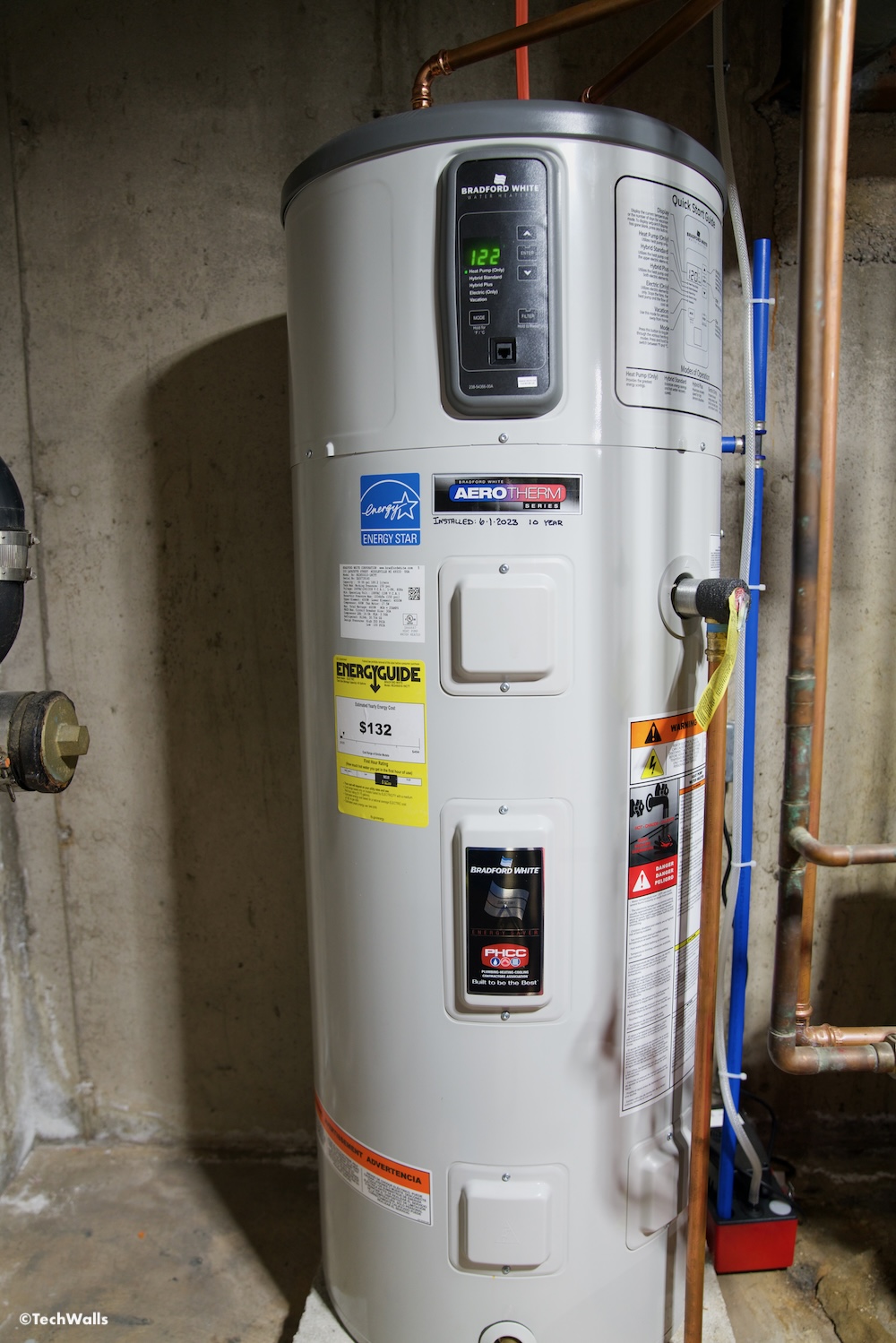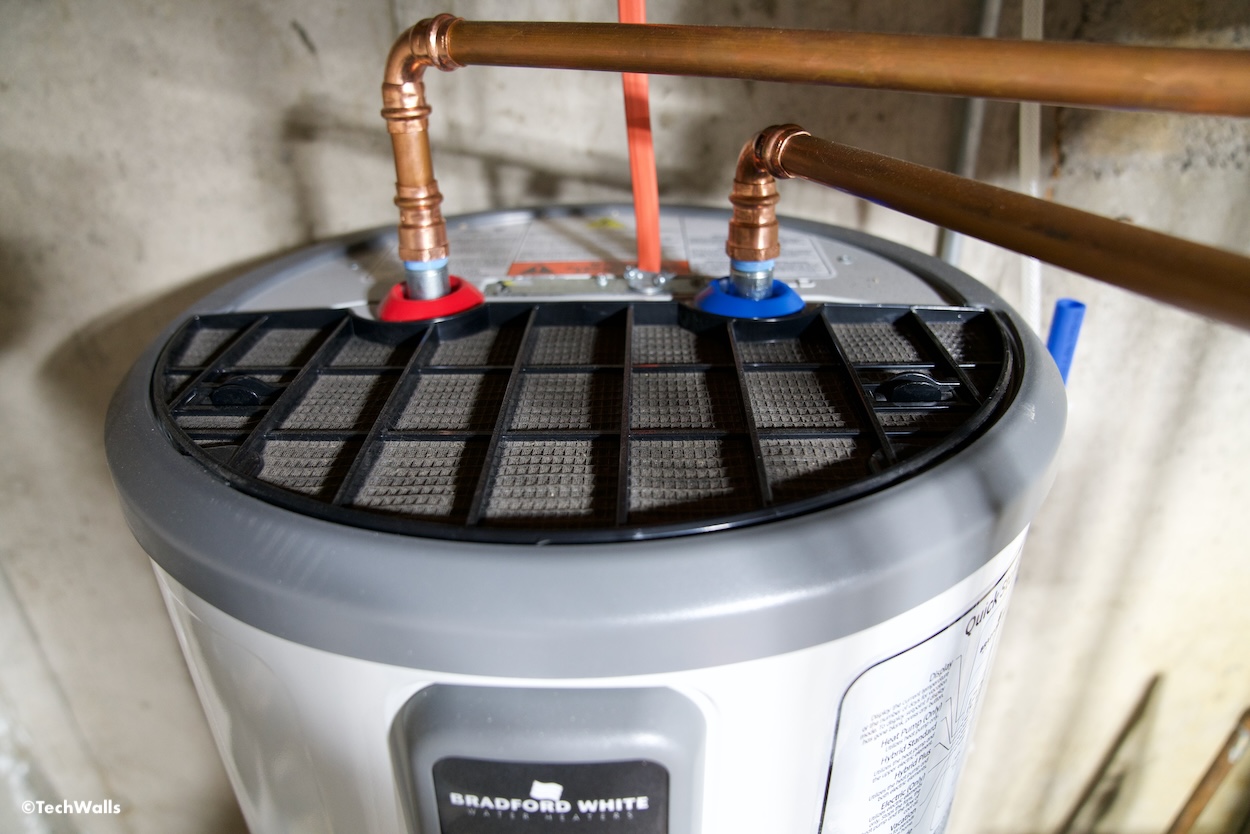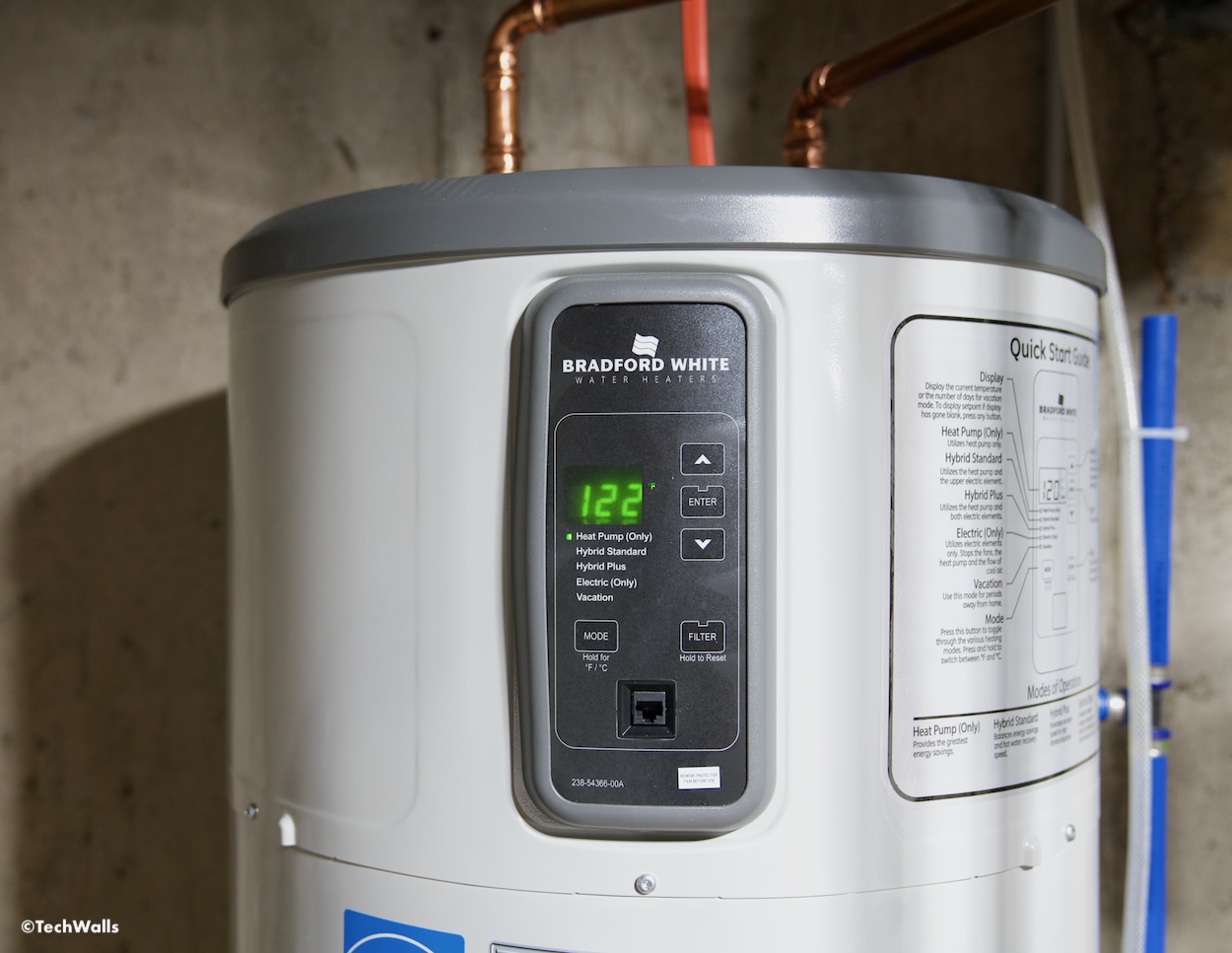I installed Bradford White RE2H50S AeroTherm Heat Pump Water Heater last summer after a major house renovation. I got rid of the oil-fired water heater along with the oil burner because they were too old and needed an upgrade. I did some research and it looked like a heat pump water heater should be the best option for me. They can be up to three times more energy-efficient than conventional electric resistance water heaters. This efficiency not only translates to substantial cost savings on utility bills over time but also contributes to a reduction in household carbon footprint.
At first, I went to Home Depot and planned to buy a Rheem ProTerra 50-Gallon Water Heater. Unfortunately, all local contractors at my place refused to install this water heater and when I contacted Home Depot’s contractors, they quoted me from $4,000 to $5,000. That was an insane price and of course, I have to find another solution. I called some local plumbers and they only install some certain water heaters; The Bradford White AeroTherm is one of them. I decided to go with this one since it is more economical, especially after the tax credit.
Installation and Maintenance
Installation of the Bradford is not too complicated and I’ve seen many people self-install it. I hired an electrician and a plumber to install the water heater and it took them just one morning. Considering its heat pump technology, it is important to ensure adequate space around the unit for air circulation. Regular maintenance, primarily involving checking and cleaning air filters, is essential for sustaining its efficiency and longevity.

Capacity and Performance
The Bradford is designed to cater to the hot water needs of small to medium-sized households. It is a bit bigger than a traditional water heater since there is an additional heat pump module mounted on top. In a practical test, it was observed that the unit can comfortably provide enough hot water for two consecutive showers, each lasting between 10 to 15 minutes. However, towards the end of the second shower, a noticeable decrease in water temperature was observed. This points to an adequate, but not abundant, supply of hot water for back-to-back usage.

This model features dual thermostat system, located at the top and bottom of the tank. This design is particularly advantageous because it addresses a common issue in water heating systems: temperature stratification. In many heaters, a single sensor at the top can be misleading, as hot water rises, leaving the bottom cooler. The Bradford’s bottom sensor ensures that the heating mechanism activates when the lower part of the tank cools down, providing a more consistent hot water supply and avoiding the illusion of a fully heated tank when, in fact, only the top layer is hot.
Recovery Time

The recovery time of a water heater is a crucial metric, especially in scenarios where hot water is consumed rapidly. I set the operation mode of the water heater to Heat Pump only for maximum energy efficiency. After two consecutive showers, the Bradford nearly exhausts its hot water supply. In colder conditions, as experienced during winter with the unit placed in an unheated basement (ambient temperature below 50°F), it took approximately 5 hours to fully reheat the water. This duration might be a concern for households with higher hot water demands, especially in colder climates.
Energy Efficiency
The AeroTherm series prides itself on energy efficiency, leveraging heat pump technology. This method is typically more efficient than traditional electric water heaters, as it transfers heat from the surrounding air to the water, rather than generating heat directly. However, the efficiency of heat pump technology is notably impacted by ambient temperature. In this case, the sub-50°F environment of the basement is still good enough for heat pump operation as the Department of Energy suggested that the ideal temperature for the heater is 40º-90ºF (4.4º-32.2ºC). When it gets colder, we can experience prolonged recovery time.
Conclusion
The initial cost of the Bradford White is higher compared to traditional electric water heaters. However, this investment can be offset by its energy efficiency, leading to lower operating costs over time. The unit is also eligible for certain energy rebates, which can further alleviate the upfront expense. This is a good choice for small to medium-sized households, particularly in milder climates. Potential buyers should consider their specific hot water usage patterns, ambient temperature conditions, and the balance between upfront costs and long-term savings. I have no complaint during the last 7 months using this water heater. With proper usage, it always provides enough hot water for my whole family, even during the coldest days (around 10ºF) at my place.
Disclosure: We might earn commission from qualifying purchases. The commission help keep the rest of my content free, so thank you!



